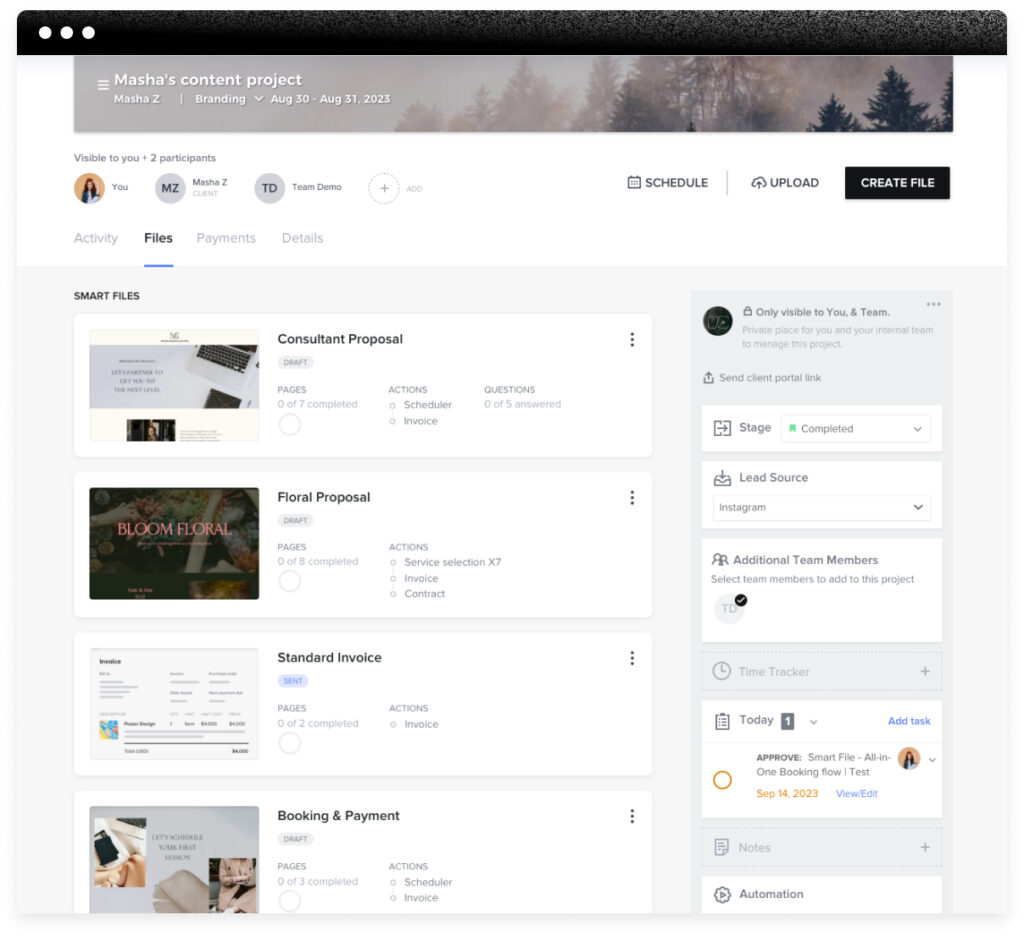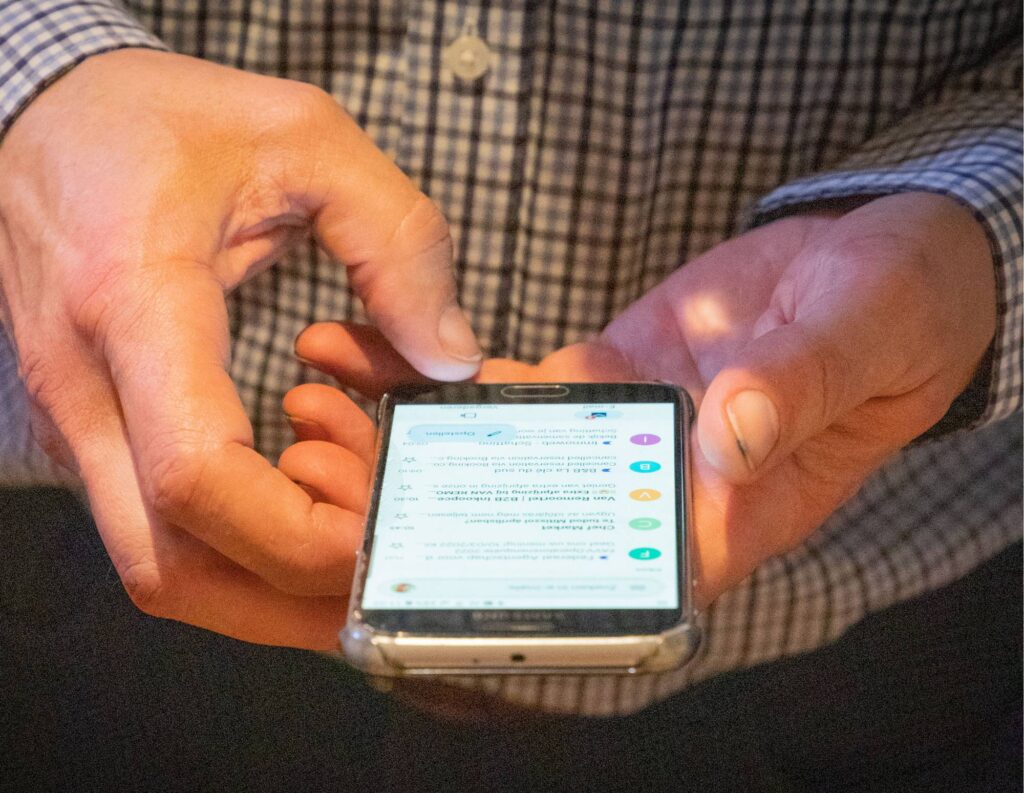Learning how to deal with difficult clients is an essential skill for any small business. Use these 9 tactics to diffuse tension & protect your business.

If you are a business owner, you have likely encountered difficult or problematic clients. This applies regardless of how long you have been in business, or if you are a new entrepreneur.
Unfortunately, it leads to challenging situations all independent business owners have to face at one point or another. Before the next stressful project occurs, learn how to deal with difficult clients now. This will help you to use the right strategies the next time you and your client aren’t in agreement.
Managing different personalities is a part of running a small business most of us have to learn as we go.
Just as there are many different types of people in the world, there are many different types of clients you might face–and not all will see eye to eye with you. In this article, we’re sharing nine strategies for dealing with difficult customers as well as examples for each. Use these tactics to help you proactively resolve conflict, improve your client relationship management, and protect your business.
Jump to:
- Set clear expectations to avoid disagreement from the start
- Build empathy with how your client feels
- Respond promptly
- Ask for specifics
- Vent elsewhere
- Get things in writing
- Offer a solution
- Just say no
- Learn from mistakes
- The bottom line: Make a plan to learn how to deal with difficult clients
1. Set clear expectations to avoid disagreement from the start
The best way to avoid someone becoming a difficult client or unhappy customer in the first place is to set clear client expectations. This should include establishing:
- Project objectives
- Responsibilities (yours and clients)
- Communication procedures
- Points of contact
- Budget
- Protocol for managing changes
The best way to do this is through your contracts. By establishing your relationship and project terms up front, you can save time and ensure effective client communication. Expectations should be clear. Otherwise, clients may become angry and feel they are not receiving what they paid for.
It is vital to have clients sign contracts prior to payment. This can be done quickly and conveniently with a booking file. With a clientflow platform like HoneyBook, you can combine your contract and invoice in one file. That way, they’re agreeing to all the expectations right before they pay and move forward.
Example:
Your project scope includes a website build with project milestones along a timeline from June to September. Say your client is starting to take too long to provide feedback on designs, and you’re at risk of significantly extending your timeline.
If you have a contract in place, you can email them with the specific terms highlighted and remind them if there are any fees for extending the agreed scope.

Use HoneyBook’s ironclad contract templates to protect your business and clients.
2. Build empathy with how your client feels
When you’re first starting a project, focus on building your client relationships. You might think about taking a few moments at the start of a call to ask about the client’s family, hobbies, or a recent vacation.
If you’re always getting right to business, you may miss out on building rapport with clients. We all tend to be more patient and understanding of people we know better as individuals.
When scheduling meetings, be sure to build in enough time to be human. If you’re hurriedly getting off one call to join the next one, you’re not going to be your best self with any of your clients. Without giving yourself enough breathing room, you’ll feel stressed, and your clients will notice.
If you’re already handling difficult clients, the same advice holds true. Shift from email to face-to-face conversations (whether that’s virtual or in-person). That way, you can get a sense of their body language or tone and more of what they’re frustrated about. Often, the whole picture doesn’t come across over email.
Perhaps there was a miscommunication, or maybe they read something wrong in your contract. Whatever it is, working to understand your client and how they feel will make it better to resolve the situation.
3. Respond promptly
It’s not always a good idea to respond immediately if you’re frustrated with something a difficult client has said or done. You can compose an angry email in your head, but that’s not the one to send.
Nevertheless you should always make it a goal to be responsive.. In fact, timeliness is a big part of client and customer experience. 90% of customers have reported that an immediate response is essential to customer service, and 58% of American consumers have said they would switch companies because of poor customer experience.
Taking too long to respond to messages is a sure way to end up with unhappy clients.
If they’re already bringing up problems, acknowledging their concern promptly will help the client to feel heard, especially if you are dealing with an angry customer. You don’t have to accept blame. In fact, you want to avoid doing so right away. Instead, tell the client you are making the issue a priority and will get back when you’ve had a chance to review it in more detail.
With client communication management software, you can manage the entire project from end to end in one easy-to-use platform. It’s important to have a system like this in place when you’re handling difficult situations so that all your communications are in one place. Likely, you may have to go back to previous conversations so you can be clear about where the misunderstanding came from.
4. Ask for specifics
If a client complains that the project isn’t working out, there’s not a lot you can do with that information. Instead, you need clients to specify what is bothering them. Though you might have to enter into some difficult conversations, it’ll help you get to the bottom of the disagreement.
They could be feeling any of the following:
- They aren’t getting enough communication from you
- They aren’t being kept up-to-date on project progress
- They feel the project is too expensive
- They don’t think you or your team members are working hard enough
Their complaints may be valid or not. However, before you can address the issue, you need to know exactly what it is. Practice active listening when you’re in conversations with your clients so you can get to the root of what they’re upset about.
Once you know their concern, you can address it. As we mentioned earlier, it’s also best to schedule a face-to-face call or meeting where you can discuss everything and take it off email.
Example
In a worst-case scenario, your client might express wanting a refund because they’re dissatisfied with your work. In this case, ask for specifics over email so you can have it documented. Then, set up a call to discuss in person.
Before the call, refer to your contract and terms. If they already have a set number of opportunities for revision, that needs to be clear. Ultimately, your contract should do the work to make sure you’re avoiding unrealistic expectations.
5. Vent elsewhere
Whether you’re dealing with difficult clients for graphic design, photography, web services, copywriting, consulting, or another area, it helps to take a step back. When working with challenging clients, don’t take your frustrations out on them. Try also to avoid taking it out on the people you’re working with on the project (or on the people or pets at home).
It’s always a good idea to take a break and a deep breath if you’re feeling annoyed or stressed out. You might find a great solution comes to you while walking to get a coffee or standing in line at the food truck. At the very least, you’ll be healthier than if you sit hunched over your work holding it all in.
Maybe you need to join an industry networking group where you can all share anonymous horror stories. Or you have a friend who works in the same field who you can get together with to complain about clients occasionally.
6. Get details in writing
If you’re dealing with difficult clients on the phone, follow up afterward with an email capturing what was said on the call. Ask for an email response confirming you have accurately set out what both parties agreed upon.
You’ll be better able to defuse a situation if you can point to established project goals or timelines. Reminding a client you warned them last Thursday that changing the website template again would add a week to delivery has more weight when you can forward the actual email or revamped timeline sent previously.
Sometimes, difficult situations may lead to changes in the project budget, scope, or timeline. Even for minor changes, you need to be sure the changes are captured in a new contract so you can avoid more misunderstandings moving forward.
Example
Say you’re a social media manager who had a defined scope with a project. Over email, your client asks you to do something outside of the scope. You add an addendum to the contract and send it over for review. Your client says they don’t think they should pay extra for the added services.
In this case, it would be great to save all of your files and communication in a customer relationship management (CRM) software. You can pull up your contract as well as the original email where they asked for additional services.

7. Offer a solution
When you’re dealing with a difficult client, don’t assume they’re wrong. You’ve got to do the legwork and establish what went wrong or where the relationship went off the rails. Sometimes it isn’t clear who’s fault it is. Instead, it could be a little bit of both, or just a simple matter of miscommunication.
If you know you can take any of the fault, accept responsibility and provide a clear, specific solution. If the client is in the wrong, point to the particular discrepancy or fault on their end and suggest how you can both move forward. Offer a solution that you can live with, carefully outline what the solution entails, and get the new agreement in writing.
8. Just say no
As an independent business owner, it can be difficult to say “no” to work. However, working with difficult clients takes time and adds stress. Think of what you can accomplish if you cut your losses when it’s appropriate. You can take on new clients and work more efficiently.
Have faith in your business and your ability to bring in new work. Free your business up to focus on work that is appreciated. That way, instead of having to read about how to deal with difficult clients, you can be looking instead for more hands to handle your growing client base.
9. Learn from mistakes
It’s always useful to review what you learn from a particular situation. Perhaps you know there are clients to avoid working with in the future. Or you need to revamp your proposals or contracts to make certain expectations clear upfront. Or you need to add time into your review processes with clients in the future.
Taking the time to reflect on what worked and what didn’t can help you improve. After examining what went wrong and how it could have been prevented, apply those lessons to avoid dealing with difficult clients in the future.
The bottom line: Make a plan to learn how to deal with difficult clients
Unfortunately, the truth is that most business owners will have to become an entire customer service team from time to time. That means it’s important to prepare yourself for dealing with difficult clients so you can handle the situation as stress-free as possible.
Be sure you’re setting clear expectations from the start, communicating consistently, and building relationships with your clients throughout each project. If things start to escalate, know where to look to resolve the situation (your contract and prior emails), and come to conversations prepared with a solution you can offer. With the HoneyBook client portal, you can ensure everything is stored in one place so you know where to look when you’re faced with a difficult situation.

Simplify communication and maintain better relationships by centralizing all client interactions with HoneyBook.




